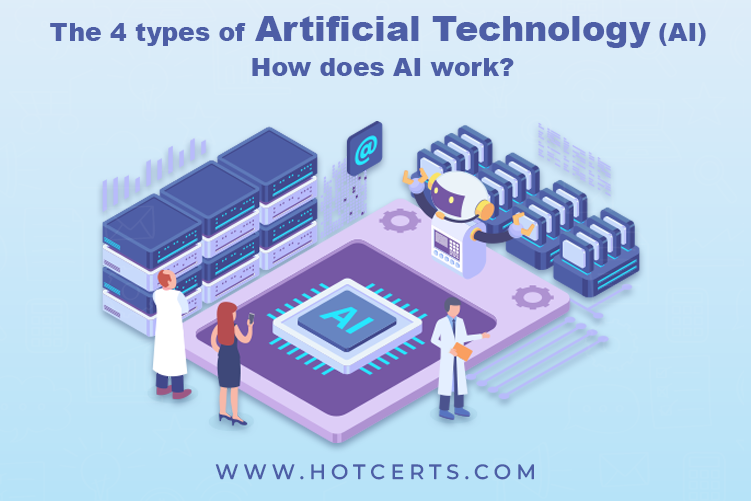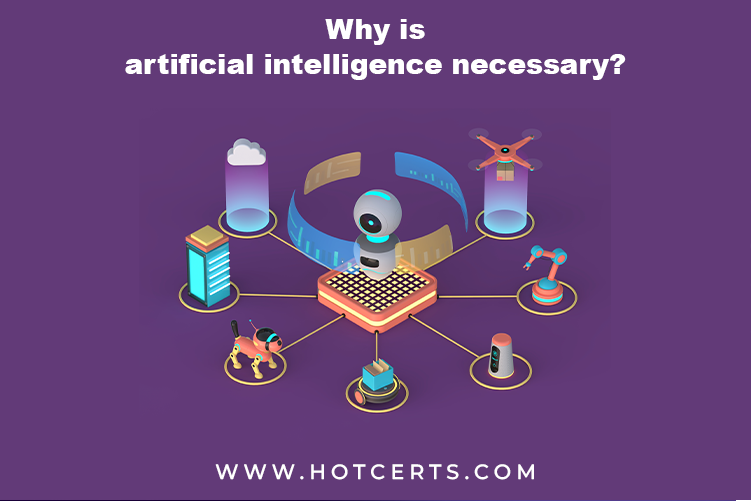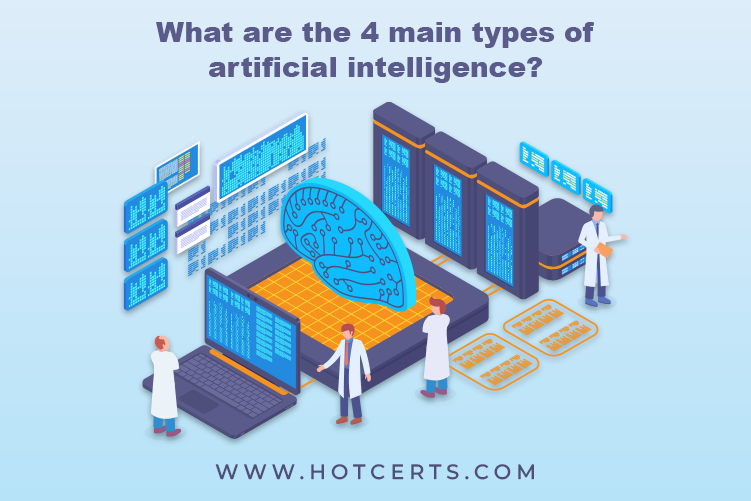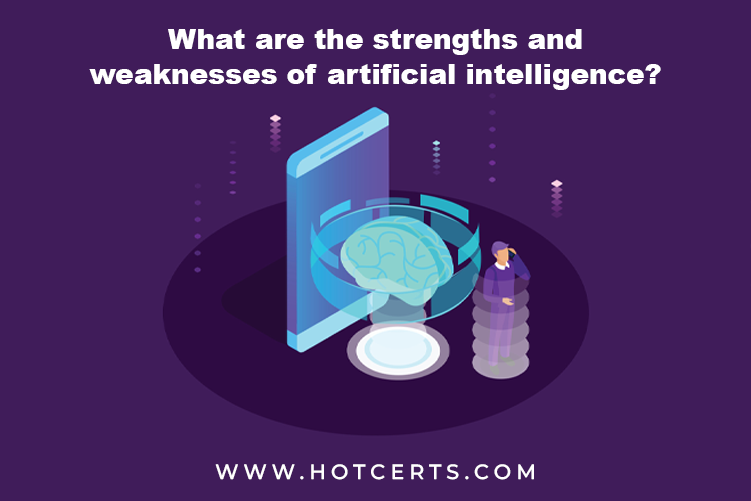What does Artificial Intelligence (AI) mean?
Artificial intelligence (AI), also known as machine intelligence, is a domain of computer science focused on building and managing technologies that can learn to make decisions and act autonomously on behalf of humans. It is a broad term that includes software or hardware components that support computer vision, natural language understanding (NLU), machine learning, and natural language processing (NLP).
Today’s AI utilizes traditional CMOS hardware and the same basic algorithmic features that drive standard software. Next-generation AI is expected to stimulate new types of brain-inspired circuits and architectures that can make data-driven decisions faster and more accurately than humans.
Understanding Artificial Intelligence (AI)
When most people hear the term artificial intelligence (AI), the first thing they usually think of is a robot. Big-budget movies and novels interweave stories about human-like machines that cause havoc on Earth, but we cannot be far from reality. Artificial intelligence (AI) is based on the principle that human intelligence can be defined, from the simplest to the most complex, so that machines can easily imitate and perform tasks. The goals of artificial intelligence (AI) enclose mimicking human cognitive activity.
Investigators and developers in this field are completing surprisingly rapid progress in replicating activities such as reasoning, learning, and perception to the extent that they can be precisely defined. Some people believe that innovators may soon be able to develop systems that go beyond the ability of humans to learn or reason about any subject. However, others remain skeptical because all cognitive activity is associated with value judgments that depend on the human experience. As technology advances, earlier benchmarks that explain artificial intelligence become obsolete.
For example, machines that compute essential functions or identify text by optical character recognition are no longer thought to embody artificial intelligence. This feature is taken for granted as a unique computer feature. AI is continually evolving to benefit different industries. Machines are wired using an interdisciplinary approach based on mathematics, computer science, linguistics, psychology, etc.
Why is artificial intelligence (AI) necessary?
AI is important because it can provide enterprises with insights into operations that they may not have previously known, and in some cases, AI can perform better tasks than humans. artificial intelligence (AI) tools often do jobs quickly, especially when it comes to repetitive, detail-oriented tasks, such as analyzing many legal documents to ensure that relevant fields are filled incorrectly.
It completes with relatively few errors. It has dramatically improved efficiency and opened the door to new business opportunities for some large companies. Before the current wave of AI, it was hard to imagine using computer software to connect a rider to a taxi, but today Uber has become one of the largest companies in the world by itself.
Use advanced machine learning algorithms to predict when you are likely to need a ride in a particular area. It permits you to get on the road aggressively before needing a driver. As another example, Google has become one of the most prominent players in various online services by using machine learning to understand how people use the service and improve it. In 2017, the company’s CEO, Sundar Pichai, announced that Google would function as an “AI-first” company. Today’s largest and most profitable companies use AI to enhance their operations and benefit from competitors.
What are the areas that make up the field of AI?
AI systems have different components and can be considered a comprehensive scientific subfield of artificial intelligence (AI). The following fields are commonly used in AI technology.
Machine Learning: A specific application of AI that allows a computer system, program, or application to learn automatically and produce better results based on experience, all unprogrammed. Machine learning enables AI to find patterns in data, reveal insights, and improve the outcome of the tasks the system is trying to accomplish.
Deep Learning: A specific type of machine learning that enables AI to learn and improve by processing data. Deep understanding uses artificial neural networks that mimic the biological neural networks in the human brain to process information, find connections between data, infer, or come up with results based on positive and negative enhancements.
Neural Networks: Analyzing a dataset repeatedly to find associations and interpret meaning from undefined data. Neural networks act like neurons in the human brain, allowing AI systems to capture large datasets, uncover patterns between data, and answer questions about them.
Cognitive Computing: Another critical component of artificial intelligence (AI) systems designed to mimic human-machine interactions, computer models perform complex tasks such as text, voice, and image analysis. It allows you to imitate the way the human brain sometimes works.
Natural language processing: an essential part of the artificial intelligence (AI) process. This allows computers to recognize, analyze, interpret, and genuinely understand the written or spoken human language. Natural language processing is vital for AI-driven systems that interact with humans in some way, either through text or voice input.
Computer Vision: One of the many uses of AI technology is the ability to view and interpret image content through pattern recognition and deep learning. With computer vision, AI systems can identify components of visual data, such as captures seen across the web, that learn by asking humans to help identify cars, pedestrian crossings, bicycles, mountains, and more.
What are the 4 main types of artificial intelligence (AI)?
1. Reactive machine
Reactive machines follow the most basic principles of artificial intelligence (AI) and, as the name implies, can only use their intelligence to recognize and react to the world before it. Reactive machines are not capable of storing memory, so they cannot make real-time notifications of judgments based on experience. Being aware of the world means that reactive machines are designed to complete only a limited number of professional missions. However, deliberately narrowing the world of reactive machines is not a cost-cutting measure. Instead, this type of AI is more reliable and more reliable. That is, it responds the same to the same stimulus each time.
A well-known example of a reactive machine is Deep Blue, designed by IBM in the 1990s as a chess supercomputer and defeated international grandmaster Garry Kasparov in the game. Deep Blue identifies the pieces on the chessboard, knows how each piece moves according to the rules of chess, confirms the current position of each piece, and what is the most logical movement at that time. I could only judge if. Computers weren’t pursuing potential future moves by their opponents or trying to position their parts better. Every turn was considered a reality, apart from other pre-made movements.
Another example of a reactive machine playing a game is Google’s AlphaGo. AlphaGo cannot assess future movements, but it relies on its neural network to evaluate current game development, giving it an edge over deep blue in more complex games. AlphaGo also defeated the game’s world-class competitors and defeated champion champions Go player Lee Sedol in 2016. Although limited in scope and not easily changeable, the artificial intelligence (AI) of reactive machines can achieve some complexity and provide reliability when created to perform repeatable tasks.
2. Limited memory
Artificial intelligence with limited memory can collect information and save previous data and predictions when assessing potential decisions. Look in the past for clues that might come next. Artificial intelligence (AI) with limited memory is more complex and has more significant potential than reactive machines. AI with little memory is created when a team continuously trains a model on how to analyze and use new data or builds an AI environment to prepare and update the model automatically.
If you want to take advantage of artificial intelligence (AI) with limited memory in machine learning, you must follow the following six steps. Creating training data and machine learning models can make predictions; models can receive human or environmental feedback, which must be saved as data. These steps Must be repeated as a cycle. Three major machine learning models take advantage of limited memory artificial intelligence (AI).
Reinforcement learning: You will learn to make better predictions by repeating trial and error.
Long short-term memory (LSTM): It uses historical data to predict the next item in the sequence. LTSM considers more recent information the most important when forecasting and discounting historical data but still uses it to conclude.
Evolutionary Generative Adversarial Networks (E-GANs): evolve and grow to explore slightly modified paths based on previous experience with each new decision. This model is always pursuing a better approach and uses simulations and statistics, or chance, to predict the outcome of its entire evolutionary mutation cycle.
3. Theory of mind
The theory of mind is precisely that — it is theoretical. The technical and scientific capabilities needed to reach this next level of artificial intelligence (AI) have not yet been achieved. This idea is based on the psychological premise of understanding that other organisms have thoughts and emotions that affect their behavior. When it comes to AI machines, it understands how AI feels about humans, animals, and other machines making decisions through self-reflection and uses that information to make its own decisions. Devices can capture and process real-time associations of “mind” concepts, emotional decision-making fluctuations, and other psychological concepts and build bidirectional relationships between humans and artificial intelligence (AI).
4. Self-awareness
Once the theory of mind is established with artificial intelligence, it will be the last step for AI to self-recognize in the future. This kind of artificial intelligence (AI) has a human-level consciousness and understands the existence and emotional state and existence in the world. You can understand what others need, not just what they tell you, but how they tell you. Artificial intelligence (AI) self-awareness relies on human researchers to understand the premise of consciousness and learn how to replicate it to incorporate it into machines.
What are the strengths and weaknesses of artificial intelligence (AI)?
Artificial neural networks and artificial intelligence (AI) technologies for deep learning are evolving rapidly. AI processes large amounts of data faster and can predict more accurately than humans. The vast amount of data created daily bury human researchers, but AI applications that use machine learning can capture that data and quickly turn it into actionable information. In this writing, the main drawback of using AI is that it is costly to process the massive amount of data needed for AI programming.
Strengths
- Good at detail-oriented jobs;
- Less time for data-heavy tasks;
- Yields consistent results; and
- AI-powered virtual agents are always available.
Weaknesses
- Costly;
- Demands deep technical expertise;
- A restricted supply of qualified workers to make AI tools;
- Only knows what has been shown; and
- Deficiency of ability to generalize from one task to another.




